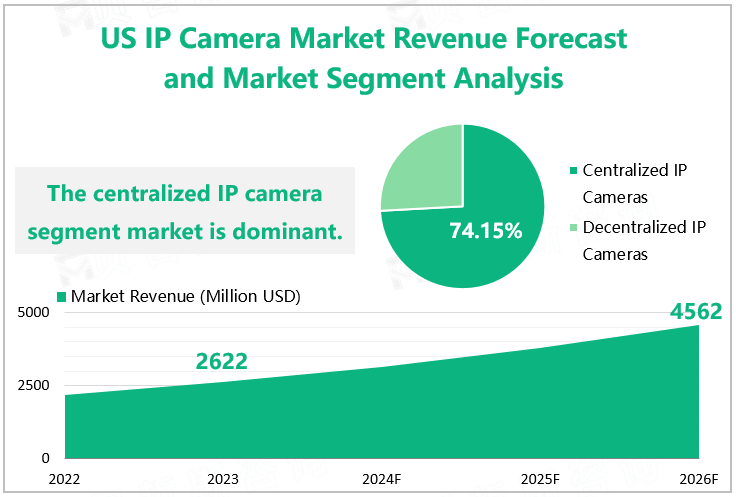IP Camera is a new generation camera that combines traditional cameras with network technology. It not only has all the image capture functions of traditional cameras but also has a digital compression controller and a web-based operating system built into its body. This allows video data, after being compressed and encrypted, to be transmitted to end users through local area networks, the Internet, or wireless networks. Remote users can use a standard web browser on their PC to access the IP camera based on its IP address, monitor the situation of the target site in real-time, edit and store image data in real-time, and even control the camera's pan tilt and lens for all-around monitoring.
With its advantages of high definition, remote access, and wide adaptability to various environments, IP cameras have been widely used in various fields such as security, education, medical care, and transportation, bringing great convenience to people's lives and work.
Overview of Market Development and Analysis of Segmented Markets
According to our research data, the US IP camera market revenue was $2622 million in 2023, among which the revenue of the centralized IP camera segment was $1945 million, with a market share of 74.15%, occupying a dominant position. In the coming years, as people's demand for home and business security continues to increase and technology continues to evolve, the US IP camera market will continue to expand. It is expected that by 2026, the revenue of the US IP camera market will increase to $4562 million.
US IP Camera Market Revenue Forecast and Market Segment Analysis
Source: www.globalmarketmonitor.com
Analysis of Market Driving Factors
The increasing demand for safety: With the increasingly complex social security situation, the safety issues of households and commercial places are receiving increasing attention from people. As a real-time and efficient monitoring tool, IP cameras are widely welcomed as they can meet people's security needs.
Technological progress: With the continuous development of network technology, the image quality, stability, and intelligence of IP cameras have been significantly improved. The application of advanced technologies such as high-definition, night vision, and facial recognition has made the functions of IP cameras more powerful, meeting the needs of different users.
The popularization of smart homes: With the popularization of smart homes, IP cameras, as an important component of smart homes, have also been widely used. Users can view the situation at home at any time through devices such as mobile phones and computers, achieving remote monitoring and control.
Analysis of Market Competitive Landscape
From the perspective of market competition, the concentration of the US IP camera market is moderate. According to our data, the industry's top 3 companies had a total revenue of $1097 million for IP cameras in 2023, with a total revenue share of 41.82%. The top three companies were NetGear, Nest, and Samsung, they accounted for 25.62%, 8.53%, and 7.67% of the US IP camera market revenue respectively in 2023.
IP Camera Market Revenue and Share of Main Companies in 2023
|
Companies
|
Market Revenue (Million USD)
|
Share
|
|
NetGear
|
672
|
25.62%
|
|
Nest
|
224
|
8.53%
|
|
Samsung
|
201
|
7.67%
|
|
Top3
|
1097
|
41.82%
|
Source: www.globalmarketmonitor.com
For more industry information, please refer to our latest released "2023 Global IP Camera Market Analysis Report, Key Competitors, Market Effect Factors, Growth, And Forecast".
